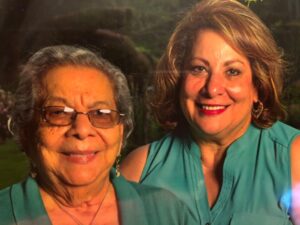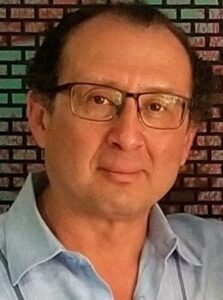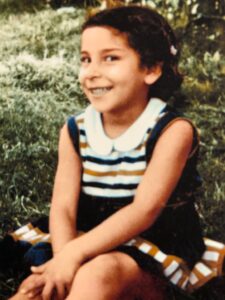History Class Learns about Central American Immigration through Stories of Immigrants
For Nicaraguan-born Gilda Cordero the road to immigration was one that was filled with lots of twists and turns. She came to the U.S. in 1978 on the eve of an emerging civil war. During the Nicaraguan Revolution, thousands of people lost their lives, and a military dictatorship was overthrown, said Trinity College History Professor Dario Euraque. Cordero, who was the oldest of four children, left behind her family, a thriving business, and a home in exchange for a safer life. Leaving Nicaragua for the United States meant Cordero had to find ways to endure tough circumstances. It took time but she eventually found a path to U.S. citizenship and earned a job as a medical interpreter.
“Life teaches you to survive with what you have,” said Cordero. “When you see a government tumbling you got to look out for your family.”

Cordero was one of seven Central American immigrants invited to speak this semester in Euraque’s class, “History of Central American Immigration to the U.S.” The course reviews the history of immigration patterns from Guatemala, El Salvador, Honduras, Nicaragua, and Costa Rica to the U.S. between the early 19th century and the current decade in the context of Latin American history. It is only the second time this class has been offered but it will be taught again in Spring 2021.
Euraque, originally from Honduras, said that inviting Central American immigrants as guest speakers helps students to better understand the history of contemporary issues and to give the immigration issues seen in the United States personal historical context with the voices of Central American women and men living in Connecticut.

“When they read the news and see political discussions, I hope my students can understand the differences and subtleties between those countries and even in the stories of my guests,” said Euraque, still a Honduran citizen. “Immigration patterns from each Central American country is very different over time and even by class status. In many cases, these relationships between countries began long before my students were born. That’s why the history is important to understand.”
Euraque, who is a permanent resident of the United States, came to the U.S. when he was only 8 years old, landing in New Orleans, where he began to learn English. He has now been in the United States for 52 years, teaching at Trinity for 30 years. Euraque said that the idea for the course and its guest speakers came from Trinity’s mission to engage, connect and transform, while drawing on the region’s Central American immigrants, all of whom belong to a cultural organization they call Central America United. He wanted to take advantage of the international diversity Hartford has to offer and have his students engage with the community around them. The guest speakers offer a diverse neighborhood of people who can share their own personalized experiences, said Euraque.
“My students have an opportunity to become global citizens,” said Euraque. “They can get a true sense of a liberal arts education here in the city. They become a part of the ebbs and flows in Hartford … for instance, there are Salvadorian and Guatemalan restaurants near the campus that offers a society of people we might not otherwise meet. It is a part of the college’s mission to engage the community.”

In the class with guest Cordero, students were curious about her story. They asked questions about the details of her journey to the U.S., whether she would return to Nicaragua, and how she found her way to Connecticut.
Cordero summarized many of her experiences. “When I came here, I came with the mindset to work. If I kept my feelings about Nicaragua it would had been difficult. My goal was to survive, study English, and absorb all that is American. My [second] husband lives in Connecticut and lived here when we met. Everything I know and do is for my life here in America,” she said.
